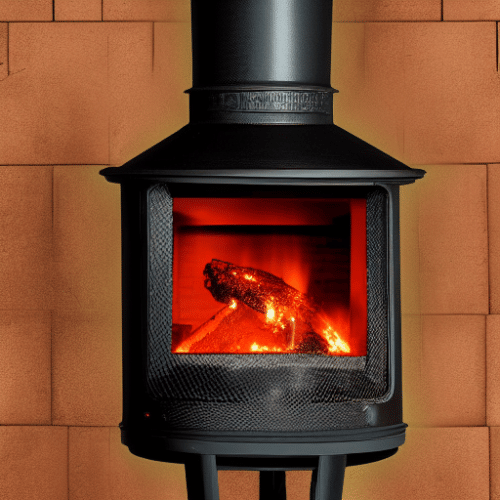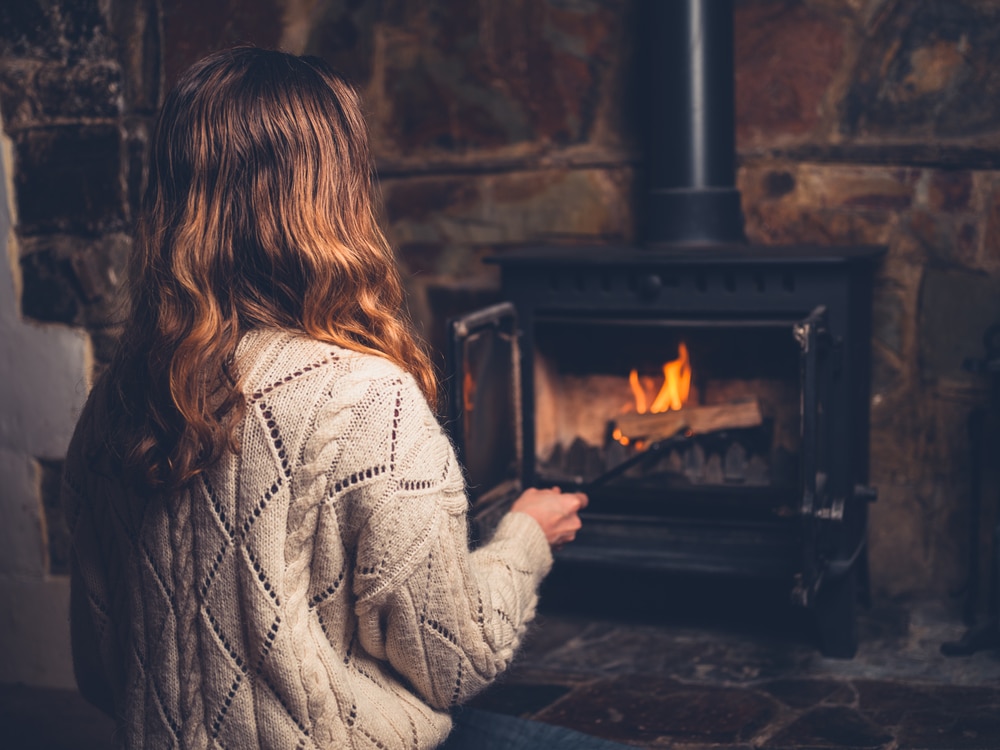Last Updated on
Are you looking to upgrade your garden? If so, a chiminea makes an excellent purchase for so many reasons. Chimineas are home and outdoor decors that can provide you warmth when relaxing on your patio or having a get-together with your loved ones.
This article summarises what a chiminea is, how to use it, and other helpful tips!
What Is a Chiminea?
Invented in Mexico in the 1600s, clay chimineas are small ovens used to provide outdoor heating or bake food in an outdoor setting. They’re designed with a bowl with a front opening to direct the smoke up into the air. Traditionally, chimineas are made from clay, but, in recent years, they’re also made from cast aluminium or cast iron.
Uses of a Chiminea
So what can you use a chiminea for, and why should you choose to purchase one? In a nutshell, they’re a great way to generate heat outdoors to keep you and your guests warm. Placed on decking or in your gardening, this type of fireplace can be highly versatile for providing warmth on a cool summer evening and allowing you to cook food without having to go indoors.
If you enjoy cooking food, you’ll love having access to a small fire pit right in your garden. Bake bread, or cook pizza, tofu, fish and meat inside of a chiminea. For the best cooking results, ensure that you cook all food pieces to the same size for an even result.
Where to Position a Chiminea
Aside from knowing the proper way to use a chiminea, it is also essential that you know where to position it properly.
No matter what chiminea you have, whether that’s a clay chiminea or a metal chiminea, there are some safety tips you’ll need to keep in mind. For the safest results, ensure that you place your clay chiminea or cast iron chiminea in an area where there’s plenty of ventilation, such as on a deck or patio.
Also, most metal chimineas work best when they’re not facing a breeze. Although this isn’t always easy to predict (though we do recommend looking at the forecast before planning to use your chiminea), we recommend setting it up vertically against the wind for the best experience. This is also to help you in lighting the chiminea easily.
Furthermore, you’ll need to bear in mind the surface that you place yours on. Fire-safe materials include stone, gravel, brick and more. Avoid placing your chiminea under trees where the flames could potentially reach the leaves and trunks, potentially leading to a fire.
If you have a patio, but it’s constructed of wood, ensure that you place your chiminea on top of a concrete surface or brick to ensure that it’s in a fireproof setting and there aren’t any safety issues.
Starting a Fire
The best and easiest way to start a fire with these outdoor fireplaces is with softwood, and we recommend using smaller pieces of the log since you don’t need large-sized logs to provide warmth. All the while, ensure that you’re wearing heat-resistant gloves to protect your skin against heat while turning the bottom of the chiminea.
It would help if you also prevented adding too much wood to start the fire as the flames should be small to not ascend to the smokestack. The safest way to begin a fire is by using a match or a lighter. You can also use balls of old pieces of newspaper underneath the large lots and then light them with the wood. Avoid using any flammable solutions, like gasoline, to light the fire as this can easily become uncontrolled and unsafe.
Important: If your chiminea is producing too much smoke in an unfortunate event, make sure you are prepared and know how to control it, as it can be very unpleasant and unsafe if left unattended.
Keeping the Fire Going

Once you’ve started a large fire, you’ll want to know how to keep the flame going, especially if you’re using this outdoor chiminea for cooking. You can achieve this by adding one or two logs at a time to prevent the flames from reaching too high. You may also wish to move the coals closer together using a heat-resistant probe or poker. Adding more oxygen to the flames will also help the fireplace to maintain a fire.
How to Stop Chimineas From Smoking
One obvious thing that you don’t want to happen with a chimenea is for it to catch fire, but you also want to follow the correct techniques to prevent it from smoking. Below are some tips to follow to prevent your chiminea from smoking during use.
Use Seasoned Wood
It can be tempting to use any wood that comes your way, but we suggest using seasoned wood since this wood is typically drier, which will then release less smoke. You can also pay close attention to the weight and appearance of the logs. As a general rule, the wood should be light and hollow for the best, safest results, and it may also have a stronger smell.
Stick to Using the Correct Wood
Research the wood that you’re using is the correct material to create a crackling fire. Some types of wood can burn slowly and remain hot, while others can release unpleasant smoke. To prevent a smoking effect, we recommend using maple, cherry, ash, apple, oak, and other types of wood that last longer than most woods. In particular, oak and pinewood are best for burning well while minimising smoke as well as keeping insects away.
Furthermore, make sure that you avoid using poplar, horse chestnut, spruce and elder. All of these materials will create a crazy amount of smoke. You should also stay away from laburnum wood, which can be poisonous.
Caring for a Chiminea
There are several tips you’ll want to take to keep your outdoor fireplace in optimum condition.
Rust Prevention
To prevent your chiminea from getting rusty, you may need to fix the grate within this outdoor fireplace and light a small amount of fire inside at a time. Once the chiminea has been burning for about an hour, you can light a large fire using wood. Allow this fire to burn for a further hour and allow it to cool down.
Only Use It When It’s Dry
Since chimineas are designed to provide heat when the flames aren’t exposed, you must keep your outdoor fire covered in the backyard to protect it from the rain.
Regularly Remove Old Wood and Sand
To keep your chiminea in its best condition, you’ll need to undergo some regular maintenance, such as regularly removing old ash and sand from its interior. Once you’ve completed this step, we recommend washing out the inside using mild soap and water. Then, allow the chiminea to dry before replacing the sand bottom.
Keep It Covered
When not in use, you’ll want to keep your chiminea covered, and during the winter months, you may want to remove it from your garden and keep it in a sheltered space to prevent any weather damage. However, bear in mind that you’ll likely need a trolley to move clay chimineas since they can be extremely cumbersome.
Keep On Top Of Its Appearance
Despite their bulk and heavy weight, cast iron chimineas and clay chimineas can be very delicate, making them prone to damage. If you notice some cracks, which can’t be fixed, you can use your chiminea as a garden pot for plants. Additionally, you may need to paint your chiminea every once in a while, and we recommend using a heat-resistant brand for this.
Cast Iron vs Clay Chiminea
We are wondering if you should invest in a cast iron chiminea or a clay chiminea. Here are some pros and cons of each type for you to consider.
Cast Iron
Here are the pros and cons of cast iron chiminea.
Pros
- Highly robust and durable. They won’t break or crack easily and can endure high temperatures for several years.
- Fairly easy to maintain, and you can paint it to maintain a like-new appearance.
- Available in a variety of colours, shapes and sizes.
Cons
- External temperatures can get very hot, making it potentially dangerous to have around children and pets.
- It can become rusty and marked if not maintained regularly or cared for.
- Heavy to move, so you’ll likely need a trolley if attempting to transport this type of chiminea.
Clay
Check out the pros and cons of clay chimineas, as well as comparisons to a cast iron alternative.
Pros
- Typically offers an authentic, traditional look that can be decorated and personalised in a variety of ways.
- Each clay chiminea usually looks different to the next one, meaning that not all are the same, providing a unique, decorative design.
- Don’t usually reach as high a temperature as cast iron chimineas, making it less likely to burn you if touched as well as safer to have around children.
Cons
- They are generally more fragile than cast iron chimineas and don’t always last as long.
- Larger clay chimineas are heavy and difficult to move and may even damage easily during transportation.
Do You Own a Chiminea?
You need to know everything about chimineas, their uses, and how to get the most out of them. Chimineas are a great addition to any garden, and we are sure you will have a great time making fires, cooking food, and enjoying what it has to offer.
If you own a chiminea, we’d love to explore some tips you have for keeping yours in its best shape. Or perhaps you have some go-to food that you cook in your backyard that you’d love to share with our readers. Either way, share your recommendations and tips in the comments!
Amy is a U.K.-based writer and editor with a penchant for helping consumers find the best home products for their needs, as well as providing easily digestible guides for living better at home. Her dedication to her work means she can usually be found elbow-deep in research or hunting down samples of the latest and greatest on behalf of her readers.
An avid DIYer herself, Amy’s passion lies in teaching others how they too can achieve their dream homes by tackling some of those pesky projects themselves! Whether it’s building furniture from scratch or turning an old dresser into a coffee table, Amy is always happy to share what she knows about making your house feel like home without spending a fortune.



